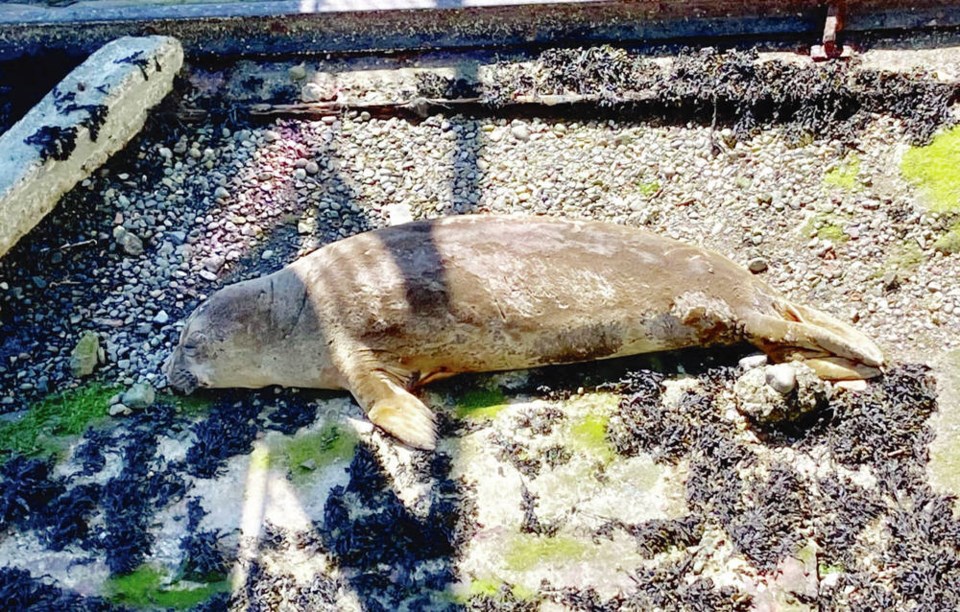People are being warned to stay away as elephant seals haul themselves out of the ocean and onto beaches ŌĆö sometimes in very public areas ŌĆö to suffer through a natural process called catastrophic moulting.
The pinnipeds can stay on land for up to a month while shedding fur and a layer of skin and they are ŌĆ£stressed and unpredictable,ŌĆØ said Paul Cottrell, a scientist with the Department of Fisheries and Oceans Marine Mammal Unit.
The DFO has received several calls about elephant seals in recent weeks ŌĆö their traditional moulting period.
Cottrell said there is a misconception that they are injured and need help.
Several of the animals have been spotted around Campbell River, including on a beach downtown, as well as shoreline areas stretching from Parksville to Sooke and Tofino.
ŌĆ£We are asking people to call us and not to approach them, and keep their dogs far away,ŌĆØ said Cottrell. ŌĆ£ItŌĆÖs quite an ordeal for these animals, really nasty and uncomfortable for them with cracked skin and in some cases pus. ItŌĆÖs quite easy to think theyŌĆÖre hurt.ŌĆØ
Although all seals shed their fur each year, elephant seals are the only pinnipeds to shed epidural layers.
And they have to do this on land, where heat speeds the moulting process by directing much of their blood flow away from vital organs to the surface of their skin.
While on land, the elephant seal doesnŌĆÖt eat much, if at all, said Cottrell, which adds to its already uncomfortable situation.
The Marine Mammal Unit has been responding to beached elephant seals by roping off large areas to the public and posting information at the site about the catastrophic moults.
Cottrell said several elephant seals have been seen on Greater Victoria beaches, includes in Esquimalt, the Gorge Waterway, Dallas Road and Gonzales Beach.
Cottrell said the elephant seal is considered the largest of the pinnipeds. Some bulls can reach six metres and weigh as much as 4,000 kilograms.
They are up to 10 times larger than females and differ in appearance, with large snouts resembling an elephantŌĆÖs trunk that are used to create loud roars during mating season.
Cottrell said the elephant seal has made an impressive recovery since being hunted to near extinction by the end of the 19th century.
91įŁ┤┤ Island is its most northerly range, although animals have been moving farther up the coast and expanding their range because of warming ocean temperatures.
Some of the elephant seals monitored near Sooke were tagged off California, Cottrell said.
Scientists are closely watching a group of elephant seals at Race Rocks, which is considered its most northern breeding ┬Łlocation.
He said ŌĆ£some puppingŌĆØ has been happening there for several years in whatŌĆÖs seen as an emerging colony.
He noted that elephant seals are deep divers and can stay under water for more than an hour as they hunt for squid, rays and sharks.
ŌĆ£They really are amazing animals.ŌĆØ



